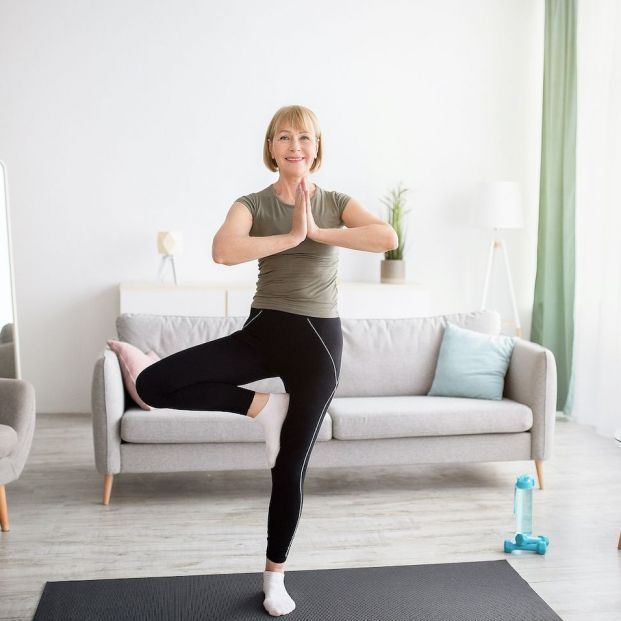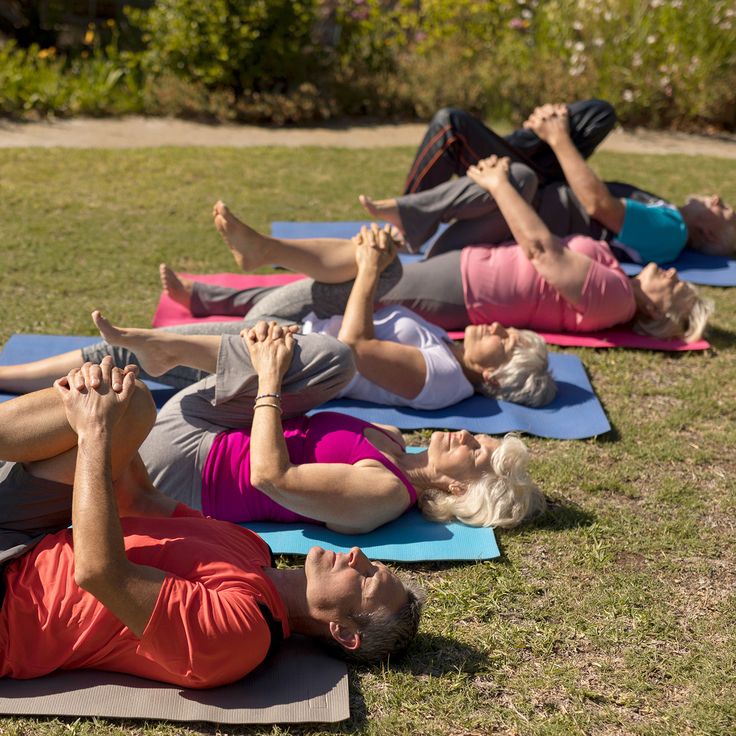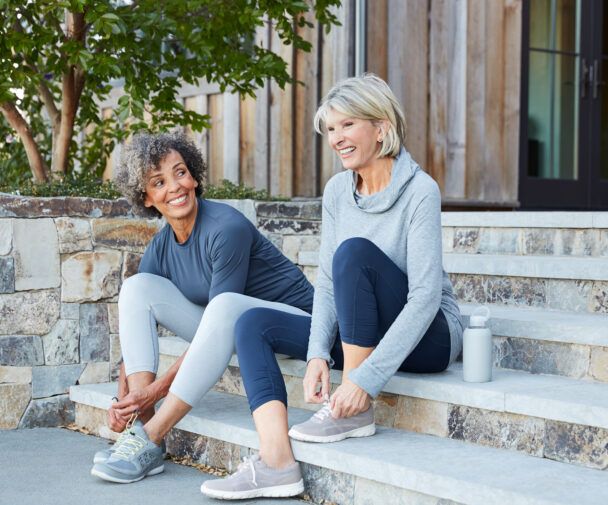
Yoga For Older Adult, Every day at precisely 6:30 AM, my 74-year-old Aunt Millie prepares her yoga mat, plays gentle jazz music, and greets the day with a downward dog pose that would make most 20-somethings blush. She claims this daily routine is why she still hikes every weekend, recalls every family birthday, and hasn’t used her blood pressure medications in more than two years. Though some of her assertions may be folklore (we all have that one magical relative), the research supporting her practices is really strong.
As a biologist who spends his time immersed in cellular circuits and molecular clocks, yes, those are actual things I can firmly tell you this: modest, regular habits are the key to longevity. Yoga is also beneficial. It’s certainly one of the finest instruments in our aged toolbox. It not only increases physical resilience and flexibility but also sharpens the mind and I don’t mean simply metaphorically.
Let us examine what the studies on yoga suggest as well as, more crucially, how you or your preferred elder can begin doing it right now to encourage good aging and a longer life.
Our range of motion is among the first things we lose as we grow older. As we age, our joints become more rigid, our muscles become tense, and suddenly, simple tasks like tying your shoes seem like intricate gymnastics. Yoga, however, is where it enters.
Scientific analysis: The synovial fluid, the lubricant in our joints production declines as we age. Yoga promotes moderate exercise and stretching; hence, it preserves joint health and muscle flexibility. Studies indicate that consistent stretching boosts tissue blood flow, hence lowering inflammation and postponing muscular deterioration.
Real-life victory: In only eight weeks, a 68-year-old guy who starts a twice-weekly yoga practice can raise hamstring flexibility by 30%. What does this mean? He can keep up with grandkids, lessen fall risk, and climb stairs more easily without blowing out his back.
Practical advice: Begin with beginner postures like Seated Forward Bend or Cat-Cow Stretch both can be done with little equipment and even from a chair.

Yoga For Older Adult, Often, when we consider strength training, we see protein drinks and clanging dumbbells. Yoga, on the other hand, gently builds strength via isometric holds and regulated movement, which is perfect for senior people wishing to prevent strain.
Starting as early as age 30, muscle loss known as sarcopenia, accelerates around 60. Resistance-based exercises, such as maintaining yoga positions, can promote muscular protein synthesis especially when coupled with proper diet.
A study in the Journal of Geriatric Physical Therapy revealed that seniors who did yoga for twelve weeks showed upper and lower body strength gains comparable to those conducting resistance workouts.
Essential for posture, balance, and independence, poses like Warrior II and Chair Pose assist in developing leg and core strength.

Yoga For Older Adult, Aging impacts your brain as much as your body; this is something not many discuss. Common in later years are depression, anxiety, and cognitive decline; nonetheless, yoga provides a mental gym of both mild and strong forms.
Scientific breakdown: Yoga increases brain-derived neurotrophic factor (BDNF), a protein linked to learning and memory, and lowers the stress hormone cortisol.
Mindful techniques, such as meditation and pranayama (breathing exercises), help increase neuroplasticity (the capacity of the brain to change and create fresh connections).
According to studies from Harvard Medical School, older people who practice yoga demonstrate better memory, attentiveness, and emotional control.
To increase calm and cognitive clarity after your yoga session, include a 5-minute body scan meditation or alternate nostril breathing (Nadi Shodhana).
Yoga For Older Adult, In elderly persons, falls are the main source of harm. However, maintaining balance requires a combination of power, proprioception (body awareness), and attention, and it’s not just about standing on one foot. Yoga teaches all three.
Scientific breakdown: Yoga improves communication among the central nervous system, muscles, and vestibular system (inner ear), all of which experience age-related decline. Yoga helps to prevent stumbles before they get serious by means of enhanced neuronal coordination.
A study of 13 research articles in the Age and Ageing journal revealed that older people who practiced yoga had a notably lower fall risk than those who did not.
Practical advice: For support, attempt the tree pose close to a wall. Lifting one foot for ten seconds at a time teaches balance.

Yoga For Older Adult, You know the saying, “I’ll sleep when I’m dead”? Let’s promise never to utter that again. Foundational to lifespan, quality sleep promotes emotional resiliency, immunological health, and cell repair. Yoga does indeed assist.
Scientific breakdown: Yoga, especially restorative and yin yoga, stimulates the parasympathetic nervous system (rest-and-digest mode). It boosts melatonin synthesis, the hormone in charge of sleep, and helps to control the circadian cycle.
In fact, a meta-analysis from Sleep Medicine Reviews revealed that older persons who practiced yoga slept longer and better than those who did not, even more so than those who took sleep drugs.
Practical advice: Before bed, practice a 15-minute yoga flow including Child’s Pose and Legs-Up-the-Wall. If you want to be fancy, include lavender essential oil.
Social Interaction And A Sense Of Purpose
Loneliness is a health danger, not only a downer. Research indicates that social isolation raises death risk more than smoking or obesity. The good news is yoga is a community, not only physical.
Scientific breakdown: Group-based yoga lessons boost mental well-being by means of social interaction and shared experience, releasing oxytocin, the hormone of bonding. Group wellness activities have been connected to improved mood and reduced dementia rates.
According to studies from the Gerontologist, seniors who attend weekly yoga courses report higher life satisfaction and lower depression scores.
Practical advice: Participate in an online or local community center senior yoga session. You could simultaneously expand your social network and stretch your hamstrings.

Is yoga therefore a magical cure? Not really. But it feels incredibly wonderful, maybe most crucially, and it engages almost every system in the body and supports healthy aging from several perspectives. And it is crucial. No anti-aging practice will last; hence, it feels like punishment.
Consider yoga as a daily dosage of self-respect rather than as exercise, a practice that informs your body, “Hey, I want you to stick around a while. And I want you to enjoy it.
Yoga is a present you can give your body and mind every day, whether you are 65 or merely planning ahead for a long and graceful future.
So dust off your mat, breathe deep, and remember: aging is inevitable but how do you age? That’s your decision.